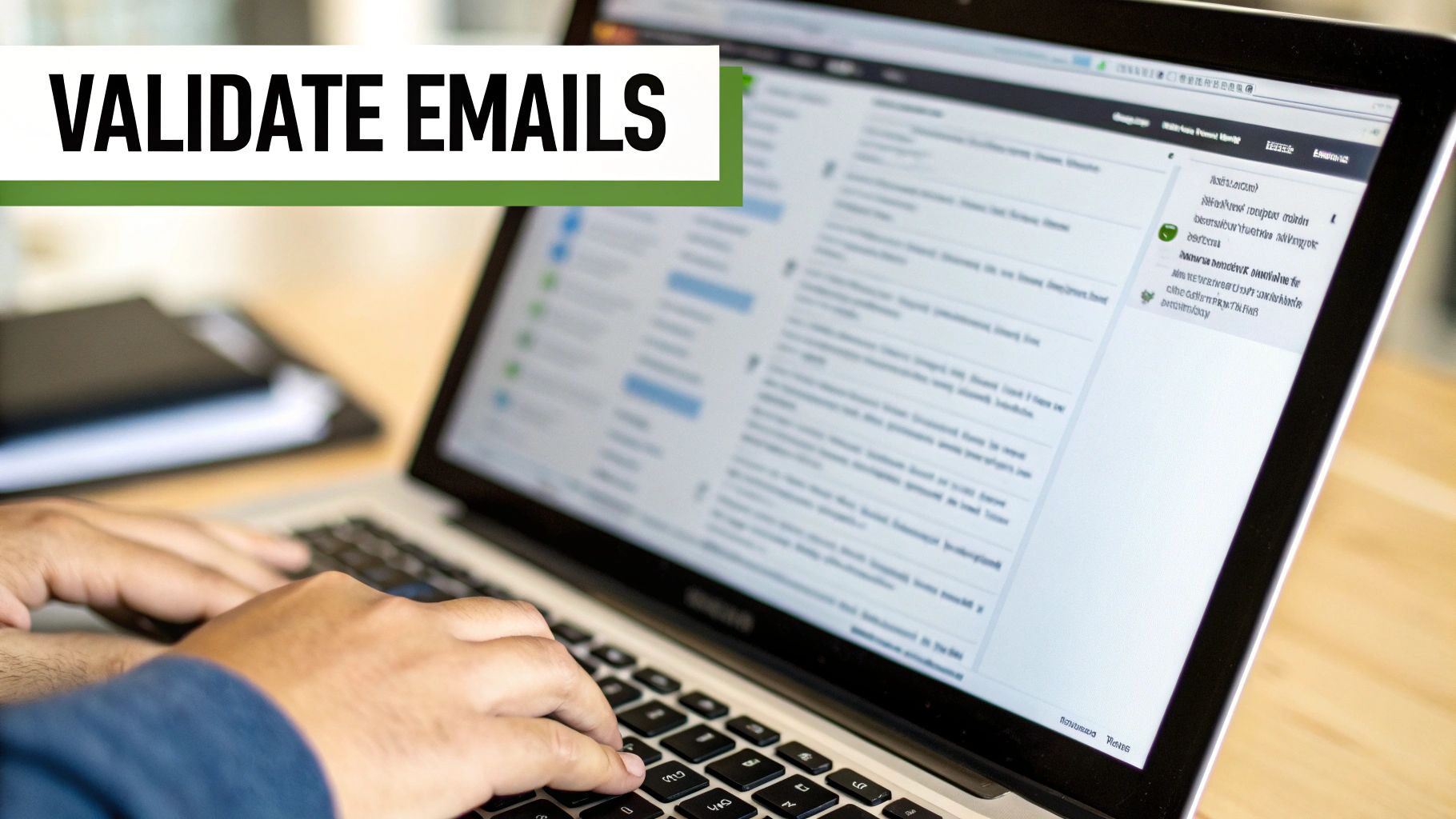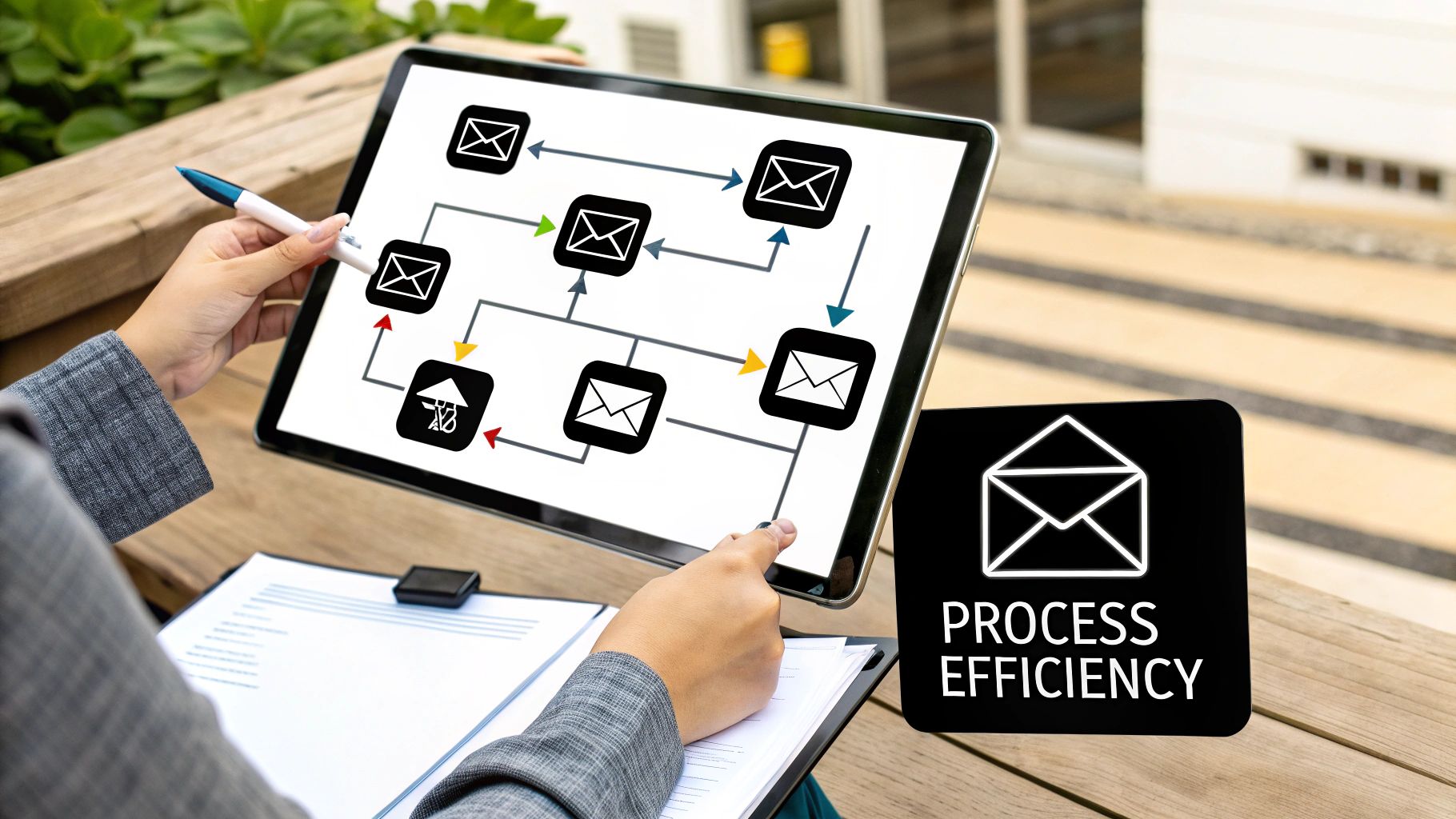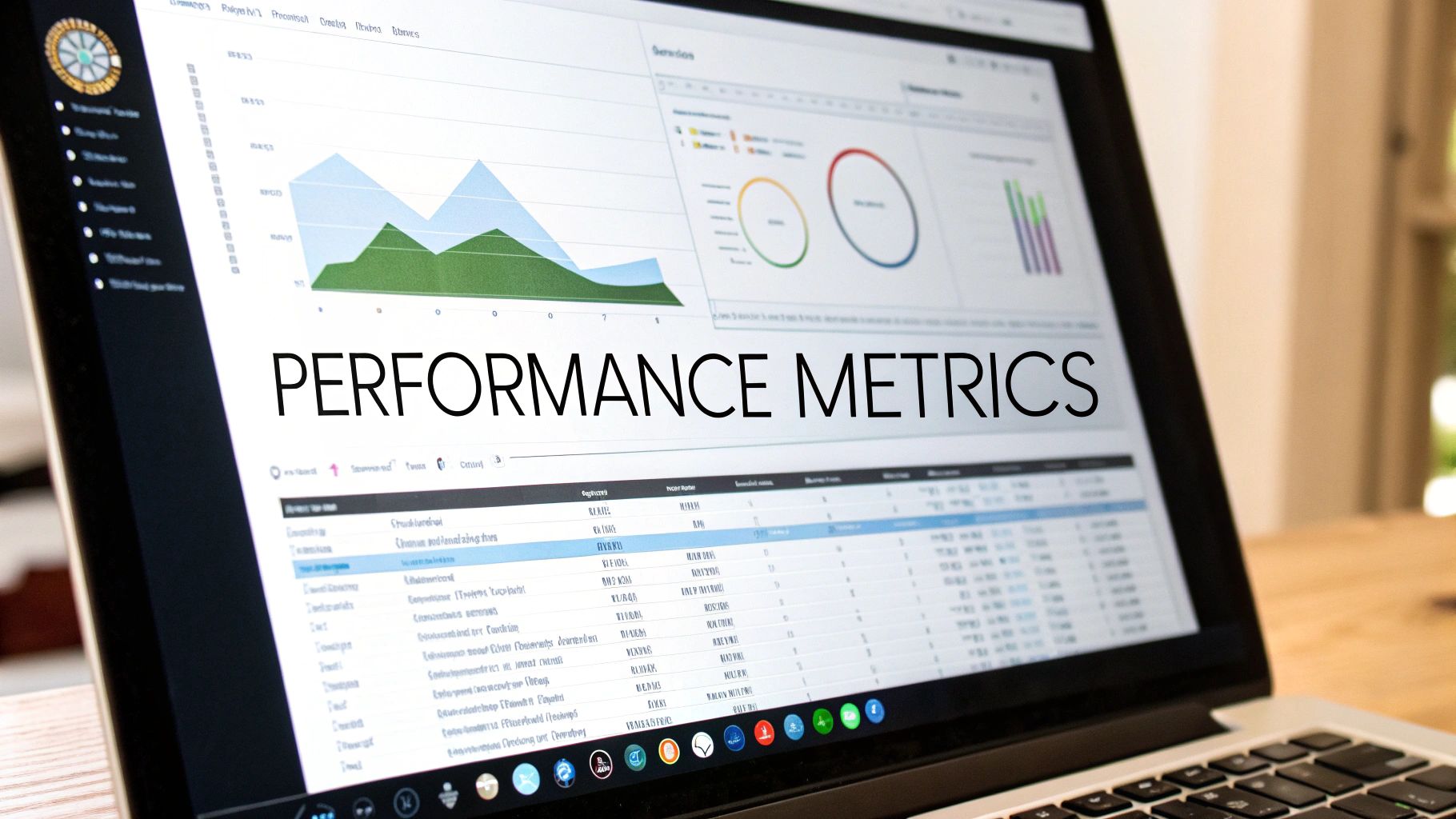Understanding the Hidden Cost of Poor List Quality
A clean, accurate email list is essential for successful email marketing. Poor list quality doesn't just hurt campaign performance – it creates real costs that directly impact your bottom line. Let's examine the true price of maintaining unvalidated email lists and how it affects your marketing efforts.
The Impact of Invalid Emails on Deliverability
Bad email addresses cause immediate problems with email deliverability. When you send to invalid addresses, those emails bounce back, telling email service providers (ESPs) that you're not maintaining your list well. This often leads to your messages getting marked as spam and damages your sender reputation. If bounce rates stay high, ESPs may even blacklist your IP address, making it nearly impossible to reach subscribers.
Wasted Resources and Missed Opportunities
Poor list quality wastes both time and money. You're paying to send emails that never reach anyone – from your email platform costs to the hours spent creating campaigns that go nowhere. Consider sending a promotion to a list full of bad addresses: a large portion of potential customers never see your offer, leading directly to lost sales.
Bad data also makes it harder to personalize your emails effectively. Even when messages do get delivered, they may not connect with readers if your subscriber data is wrong. This reduces engagement and conversions while making it harder to build relationships with your audience.
The Financial Impact of List Decay
Email lists naturally degrade as people change addresses, abandon accounts, or unsubscribe. Research shows that 23% of email addresses become invalid each year, mainly due to fake and invalid addresses causing bounces. Regular email validation can reduce bounce rates to 2% or lower, protecting your sender reputation and delivery rates. Clean lists also provide better audience insights for targeted, effective content. Learn more about email validation ROI. Without proper maintenance, this ongoing decay creates significant costs.
Turning List Validation into a Strategic Advantage
Smart marketers see email list validation as an investment, not just maintenance. By regularly cleaning and validating their lists, they improve deliverability, eliminate waste, and gain accurate audience data. This leads to more targeted campaigns that drive better results. Taking a proactive approach pays off through higher engagement, more conversions, and stronger ROI. The next section explores specific strategies used by top-performing email marketers.
Mastering the Art of List Validation
Email list validation is a key component of successful email marketing. Going beyond basic address verification, a strategic approach helps build strong, engaged subscriber lists. Let's look at how top marketers develop effective validation processes that drive real results.
Integrating Validation at Every Touchpoint
Smart marketers check email validity at each stage of subscriber interaction. Real-time validation on signup forms stops bad addresses before they enter your database. Adding checks during lead magnet downloads, event registrations, and other key moments maintains data quality. This proactive strategy prevents cleanup work later.
Balancing Automation and Human Review
While automated tools efficiently handle basic validation tasks like removing invalid or duplicate addresses, human oversight remains important. Complex cases like temporary bounces and potential spam traps often need manual review. Combining automation with expert judgment delivers the best results while protecting valuable subscriber relationships.
The Power of Regular Maintenance
Like any business asset, email lists need consistent upkeep. Research shows that 20.94% of addresses in unverified lists are invalid. To maintain quality, verify your list every 2-3 months and before major campaigns. Regular validation prevents bounces and spam issues that can damage sender reputation. For more details, see: Email List Verification Statistics
Building a Scalable Validation Process
As your subscriber base grows, your validation approach must keep pace. Choose tools and methods that maintain accuracy even with larger data volumes. Integration with your CRM and marketing platforms ensures smooth data flow across systems.
Following these validation best practices helps you reach the right subscribers with relevant messages. A clean, verified list boosts engagement and campaign performance. The next step is creating an effective data hygiene system to maintain list quality over time.
Building a Data Hygiene Framework That Works
A solid data hygiene framework goes beyond simple email list validation. By combining smart tools with proven processes, marketing teams can keep their email lists clean and effective as they grow. Let's explore how successful teams achieve this balance.
Automating the Essentials of Email List Validation
Smart automation is key for managing email lists at scale. Good tools can handle the basics like:
- Finding and removing invalid emails
- Spotting duplicate entries
- Processing unsubscribe requests
- Validating new signups in real-time
This automation frees up your team to focus on strategy rather than manual cleanup work. For example, adding validation to your signup forms stops bad emails from getting in. Automatic bounce handling removes problematic addresses right away, which protects your sender reputation.
Strategic Oversight for Enhanced Data Quality
While automation helps, human oversight remains important – especially for tricky cases. Take temporary bounces, for instance. These might just mean a valid address is having a short-term issue. The best approach combines automated tools with regular reviews by your team.
Watch your validation results for any patterns or unusual issues. This helps you catch problems early and improve your process over time.
Implementing Regular Cleaning Procedures
Regular cleaning is essential for any good data hygiene system. Without it, you risk spam flags and poor delivery rates. Key practices include:
- Removing duplicate and incorrect addresses
- Using double opt-in for new subscribers
- Cleaning lists on a set schedule
- Validating emails in real-time
These steps lead to better targeting, higher conversion rates, and a stronger brand reputation. Want to learn more about current validation trends? Explore this topic further.
You might be interested in: How to master email categories.
Building lasting data hygiene is about more than just picking tools – it requires dedication to keeping lists clean. When you combine automated processes with careful oversight and regular maintenance, you create a system that protects your reputation and gets results from your email marketing.
Making Email Lists Smarter With AI
AI is changing how we manage and check email lists. Instead of just cleaning lists after problems occur, AI helps catch and prevent issues before they happen. This helps marketers work more efficiently while maintaining higher quality lists.
Smart Fraud Detection
One key advantage of using AI for email validation is its ability to spot suspicious activity. Machine learning systems can analyze patterns to identify fake signups and potential scams before they cause problems. For example, AI can detect unusual patterns in:
- Email address formats and domains
- Signup timing and behavior
- IP addresses and locations
This proactive approach helps protect your sender reputation and prevents wasted resources.
Engagement Predictions
AI excels at predicting which subscribers will engage with your emails. By studying past behavior, machine learning can estimate who is most likely to open, click and convert. This allows for:
- Better list segmentation
- More targeted messaging
- Higher open and conversion rates
- Improved focus on engaged subscribers
Automated List Management
AI streamlines routine list maintenance by automatically:
- Verifying email addresses
- Flagging inactive subscribers
- Removing invalid addresses
- Updating contact information
This frees up marketing teams to focus on strategy and content instead of manual list cleaning.
AI continues to improve email validation with greater accuracy and efficiency. Machine learning algorithms can process huge email lists, catching issues that basic validation might miss. The technology uses historical data to make smart decisions about email legitimacy in real-time. Learn more about the latest email validation trends in this industry report.
The Human Touch
While AI tools are powerful, the human element remains essential in email marketing. Building real connections requires understanding your subscribers as people. AI should enhance, not replace, genuine communication and relationship building. Focus on earning trust through authentic interaction while using AI to handle technical tasks. This balanced approach leads to stronger subscriber relationships.
Measuring What Matters in List Validation
Email list validation directly impacts your marketing results, but you need to look at more than just basic metrics to understand its true value. Let's explore the key metrics that show how validation efforts drive real business growth.
Beyond the Basics: KPIs That Drive Growth
While monitoring bounce rates is important, it only tells part of the story. Here are the essential metrics to track:
-
Deliverability Rate: Shows the percentage of emails reaching inboxes successfully. Moving from 80% to 95% deliverability means reaching 15% more of your subscribers – a significant improvement for any campaign.
-
Spam Complaint Rate: Measures how often recipients mark your emails as spam. A clean list helps prevent spam complaints that can damage your sending reputation and block future emails.
-
Conversion Rate: Tracks how many recipients take your desired action, like making a purchase. Valid email addresses mean your messages reach people who are more likely to engage and convert.
-
List Growth Rate: Shows how your subscriber base expands over time. Focus on steady, sustainable growth with engaged subscribers rather than raw numbers.
Building a Measurement Framework
Create a system to track validation ROI by:
-
Setting Baseline Metrics: Record your current performance across all KPIs before starting validation. This gives you clear before/after comparisons.
-
Tracking Changes Over Time: Monitor metrics regularly after validation to understand both immediate and lasting impacts.
-
Analyzing and Adjusting: Review the data to spot areas needing improvement. If spam complaints stay high after validation, investigate why and update your approach.
Using Validation Metrics to Inform Strategy
Smart marketing teams use validation insights to guide broader decisions:
-
Refine Targeting: Focus on your most engaged subscriber segments to improve results.
-
Improve Content: Study which emails perform best and adjust your content accordingly.
-
Optimize Send Times: Use engagement data to find the right email frequency for your audience.
By measuring what truly matters, you'll see the full value of email list validation and be able to show concrete results. Want to learn more? Check out our guide on understanding more about email authors.
Creating Your Validation Success Roadmap
Building an effective email list validation strategy requires consistent effort over time. Like tending a garden, regular maintenance keeps your email list healthy and growing. Let's explore how to create a practical validation process that works for organizations of all sizes.
Choosing the Right Email List Validation Tools
The foundation of validation success starts with selecting tools that match your needs. When evaluating validation solutions, focus on these key factors:
- Accuracy: Select tools that deliver 98% or higher accuracy rates to effectively identify and remove invalid addresses
- Processing Speed: Evaluate how quickly tools can validate your list size, especially for real-time validation during signups
- System Integration: Look for seamless connectivity with your existing CRM and marketing platforms to enable smooth data flow
- Advanced Features: Consider capabilities like spam trap detection, disposable email identification, and syntax verification
- Budget Fit: Find the right balance between cost and functionality based on your list size and usage needs
Establishing Effective Validation Workflows
Build these essential validation steps into your existing processes:
- Signup Validation: Add real-time validation to web forms to stop bad addresses before they enter your database
- Regular Cleaning: Schedule full list validation every 2-3 months or before major email campaigns
- Bounce Management: Set up automatic removal of hard bounces to protect your sender reputation
- Campaign Analysis: Review bounce rates and spam complaints after sends to identify potential issues
Building a Sustainable Validation Process
Create an approach that grows with your business by focusing on:
- Clear Documentation: Write down your validation tools, steps and responsibilities to maintain consistency
- Team Training: Educate staff on validation importance and proper tool usage
- Process Reviews: Regularly evaluate and improve your validation approach based on results
- Flexibility: Design your strategy to handle changes in list size and marketing needs
Ready to take your email validation to the next level? Try EmailAddress.ai to experience industry-leading accuracy that will boost your campaign performance.





